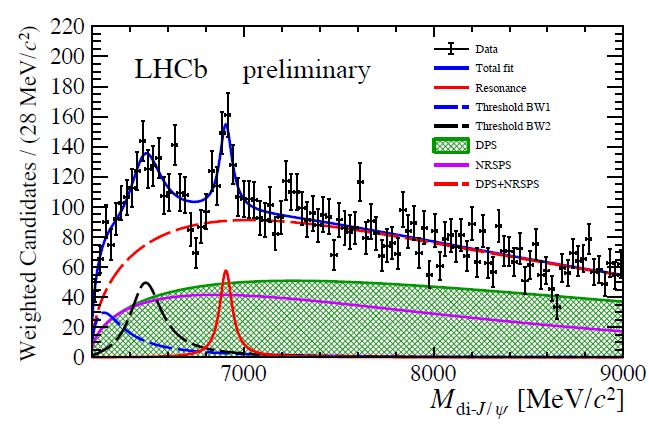One example of this roller-coaster is the history of the structure of hadrons - subnuclear particles which we now know to be made of quarks and gluons. In the fifties of last century such particles, observed and measured at the first particle accelerators, got classified into mesons and baryons based on their properties. They soon started to create inventory problems due to their large number and diverse sets of properties, and efforts to find an efficient way to put order in their otherwise messy catalog went underway.
The efforts eventually succeeded in 1964: Murray Gell-Mann and George Zweig, the Mendeleevs of hadrons, independently understood that all such observed particles (there were literally scores of them by then) could be explained by postulating that three elementary objects (called quarks by Gell-Mann and Aces by Zweig) could combine into quark-antiquark pairs to form mesons, and into quark triplet to form baryons.
The "static quark model" was thus born. Such an elegant construction was too juicy a target, though, so the deconstructing phase soon began, with experiments all over the world trying on one side to find hadrons that would not fit in the quark-antiquark or quark triplet explanation of Gell-Mann and Zweig; and on the other side, to detect hints of free quarks - which again, the model did not foresee.
Serious searches for free quarks soon stopped, when it was realized that indeed, the evidence for quark confinement within hadrons was too strong to make that kind of research attractive and meaningful. On the other hand, the search for exotic hadrons has continued for decades, with many controversial results put forth and then retracted (as, for example, several evidences for "glueball" states made of gluons and no quarks at all).
The LHCb experiment, however, has in the past decade led efforts that brought to a number of observations of what could indeed be states made up of four or five quarks. The question by now is not so much if these exotic states exist (they do), but rather, if they are sort of molecules made up of, e.g., a baryon and a meson loosely connected (the system in total is made up by five quarks), as in the case of states dubbed "pentaquarks", or by two mesons (tetraquarks); or if they are true bound states of four or five quarks jolly orbiting one another within a bag of gluons.
The latest entry in the inventory of exotic hadron candidates is what looks and smells like a bound state of four charm quarks (or better, two charm and two anticharm quarks). This is a recent observation that LHCb pulled off by searching its large dataset for a signal of pairs of J/Psi mesons. The J/Psi, first seen in 1974 at Brookhaven and Stanford, is a "quarkonium" particle made up of charm and anticharm. It weighs about three times more than a proton, and it decays very distinctively (in a fraction of the cases) by annihilating into a virtual photon, which then materializes into electron-positron or muon-antimuon pairs.
By searching for pairs of J/Psi decays to muon pairs, when the two mesons appear to be produced in the same proton-proton collision, LHCb found a peak in the total mass of the system - indicating that the two J/Psi mesons were in turn the result of the decay of a heavier object X made of four charm quarks.
Below you can see a histogram where in each bin is reported the number of observed candidate J/Psi pairs. The horizontal axis describes the total mass of the decaying system. The distribution is complex, but a relatively credible explanation of its features is that on top of a continuum of non-resonant J/Psi pairs, either produced in different hard subprocesses or anyway not correlated with one another, lays a peak produced by decays of a heavier particle X (whose mass is a bit more than twice the sum of two J/Psi mesons, which each weigh 3.097 GeV). Having a well-defined mass, X always yields that value of reconstructed total mass of the system, hence the peak.

As I said, the above is only one possible explanation for the observed spectrum. While the structure observed at 6.9 GeV is statistically significant -meaning that a smooth background could not easily fake it-, attributing it to a bound state of four charm quarks is another matter. Also, other possible resonances may be playing a role in the distribution, along with interference effects causing dips, etcetera. In other words, this graph means that there's a lot to understand in the data. Hence, good luck to my fellow LHCb colleagues, and congratulations for the newly found peak!





Comments